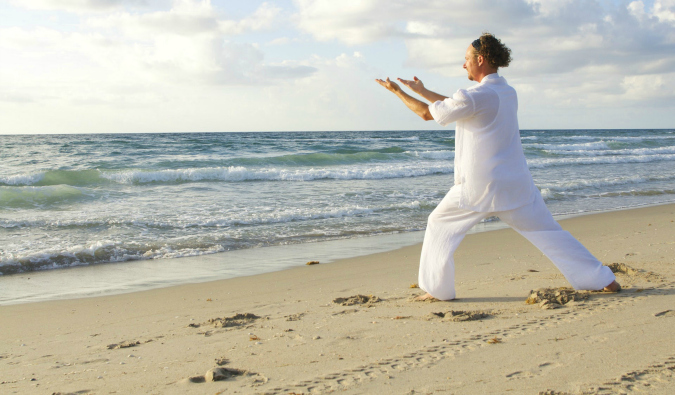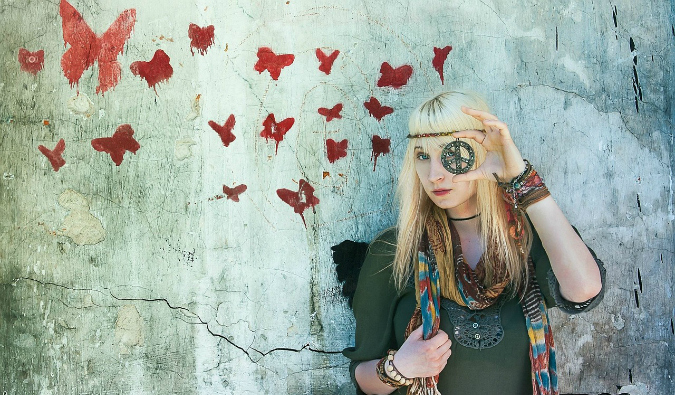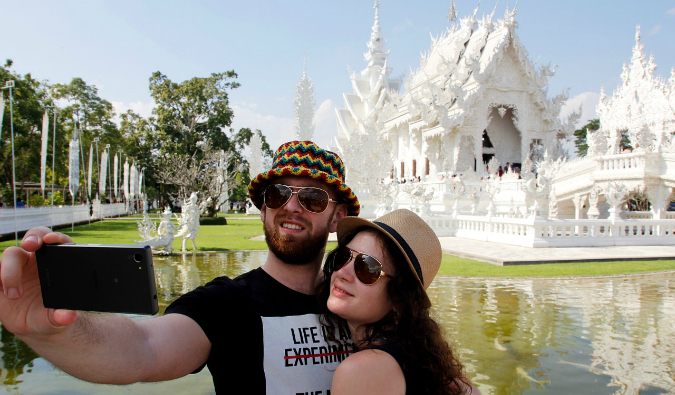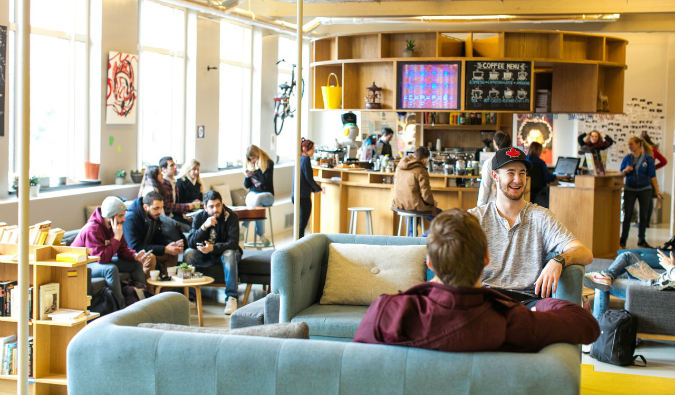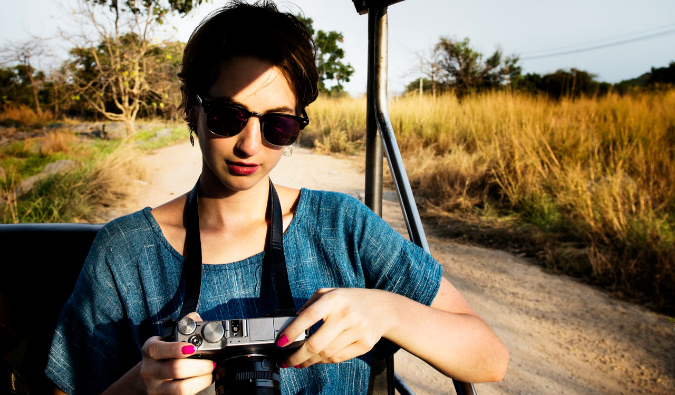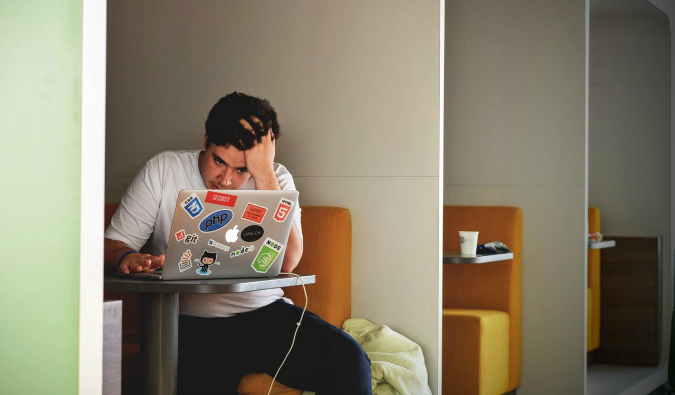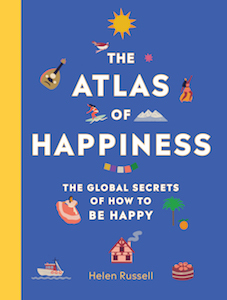
Posted: 4/25/2019 | April 15th, 2019
Tokyo is one of the most amazing cities in the world. It’s fast-paced, futuristic, and bursting with weird and wonderful activities to keep you busy, including gorgeous shrines, palaces, and temples; hip clubs and bars; and fashionable people and shopping, not to mention cherry blossoms.
Tokyo lives up to all the hype you’ve heard about it.
You never know what you’ll find here. One second you’ll run into a group of women dressed in pig masks and ’80s dresses and the next you’re in a robot café.
Or a centuries-old temple.
It’s also one of the biggest cities in the world, home to over 13 million people — almost 40 million if you count the Greater Tokyo Area. It’s massive!
Not surprisingly, it’ll take some time to see it all. And there are so many nooks and crannies to explore that it’s easy to get lost.
Here is my suggested itinerary on how to visit the best restaurants, sites, and activities in Tokyo:
Table of Contents
Tokyo Itinerary: Day 1 – Ueno Park, Museums, and Asakusa

Visit the Tsukiji and Toyosu Fish Market
As of 2018, the main fish market moved to Toyosu. The new market is twice the size of Tsukiji, making it the largest fish market in the world. Just make sure to get a visitor’s pass when you enter.
Eat just-caught sushi for breakfast and marvel at the chaotic atmosphere at the world’s largest tuna market. The auction here powers much of the world’s sushi supply, and it is truly breathtaking. All around you are fish with colors and shapes you didn’t know existed. I have never seen more seafood I couldn’t identify.
The old outer market where you can find food and shops is still in the same location, in Tsukiji. You can still head there to eat and look around but the main market is now in Toyosu.
Tsukiji Fish Market: 5 Chome-2-1 Tsukiji, Chuo, +81 3-3542-1111. Admission is free.
Toyosu Fish Market: 6 Chome-6-2 Toyosu, Koto, +81 3-3520-8205. Open Monday-Saturday from 5am-5pm, though most shops don’t open until 7am. Admission is free.
Relax in Ueno Park
Ueno Park is a lovely spot to spend the day. It’s a perfect spot to photograph the many cherry trees and have a picnic. Don’t miss these sites in the park:
- Tokyo National Museum – This museum is in the north end of the park. Established in 1872, this massive building houses one of the world’s largest collections of art and artifacts from Asia, particularly Japan. 13-9 Uenokoen, Taito, +81 3-3822-1111, tnm.jp. Open daily 9:30am-5pm (8pm on most Fridays). Admission is 620 JPY.
- Tosho-gu Shrine – This 17th-century Shinto shrine can also be found in the park. It’s beautiful with carved gold doors and ornate carvings. 9-88 Uenokoen, Taito, +81 3-3822-3455, uenotoshogu.com/en. Open daily 9am-5:30pm. Admission is free, though to go further into the shrine, you’ll have to pay 500 JPY.
National Museum of Western Art
Opened in 1959, this is one of the only art galleries in the country to focus on Western art. The collection of almost 5,000 pieces extends from the Renaissance all the way to the 20th century.
7-7 Uenokoen, +81 3-3828-5131 , nmwa.go.jp. Open Tuesday-Sunday 9:30am-5:30pm (8pm on Fridays). Admission is 500 JPY for adults, 250 for college students, and free for seniors and anyone under 18.
Tokyo Metropolitan Teien Art Museum
Built in 1933, this small museum used to be the official residence of the Prince and Princess Asaka. The prince had studied in Paris and wanted to bring the art deco style to Japan, which explains the building’s style and decorations. In 1983, the residence became a museum and is now home to a rotating series of modern art exhibitions.
5-21-9 Shirokanedai, +81 3-3443-0201, teien-art-museum.ne.jp/en. Open daily 10am-6pm. Admission is 200 JPY, with discounts available for students, children, and seniors.
Stroll Along the Meguro River
The Meguro River weaves almost five miles through the city and makes for a magnificent stroll. There’s a path with a bit of greenspace that follows the water, so plenty of locals walk or exercise there. In the spring, you’ll be able to see a lot of cherry blossoms.
Check out Asakusa
If you want to check out some of Tokyo’s historic religious sites, be sure to spend some time wandering around Asakusa. Two places that I’d suggest you visit are:
- Senso-ji – This is Tokyo’s most popular and famous temple. It’s beautifully painted and sits in a scenic spot near a pagoda and the beautiful Kaminari Gate. There’s a huge statue of Kannon, the goddess of mercy, inside the main hall. Look at the “wooden wishes” cards hanging off to the side: you can write your own and join the artistic display. It’s very busy during the day, so maybe check out the grounds in the evening. 2 Chome-3-1 Asakusa, Taito, +81 3-3842-0181, senso-ji.jp. The grounds are open 24/7, though the temple itself is open daily 6am-5pm. Admission is free.
- Asakusa Shrine – Not far from Senso-ji is this Shinto shrine. This is much more peaceful than Senso-ji as there are fewer people and you’ll able to see people praying, meditating, or performing traditional rituals. It was built during the Edo period and survived the air raids of World War II. 2 Chome-3-1 Asakusa, Taito, +81 3-3844-1575, asakusajinja.jp. Open daily 9am-4:30pm. Admission is free.
Have Dinner with Ninjas
For a unique dining experience, head to Ninja Akasaka, a ninja-themed restaurant designed like an Edo-era building, with waitstaff clothed in stereotypical all-black garb and trained in all sorts of tricks and illusions. You’ll order off old scrolls while being entertained by the skillful tricks of your server! It’s super fun.
Tokyu Plaza Akasaka, +81 3-5157-3936, ninjaakasaka.com. Open daily 5pm-10:30pm (9:45pm on Sundays)
Drink in Golden Gai
If you are looking for something interesting to do at night, this alley of backstreet bars is a cool spot to start at. There isn’t much going on here during the day, but come sundown, these zigzag hallways and closet-sized beer rooms are filled with interesting people and cheap drinks.
Tokyo Itinerary: Day 2 – Imperial Palace, Below the Girders, and Quirky Cafes

Stop by the Imperial Palace
The Imperial Palace, home to the Emperor of Japan, is a terrific spot to learn about Japan’s history and culture. Formerly Edo Castle, it was built in the 15th century, and some of the walls and moats from that time are still in use to this day. When the Emperor moved from Kyoto to Tokyo in 1869, he took Edo for his new palace and renamed it the Imperial Palace.
Though you can’t go inside (or get super close), the building is amazing. It is surrounded by beautiful grounds and a park, and there’s a moat around the stone walls. You can also see the changing of the guard ceremony, though it’s relatively low-key and unassuming. Admission to the grounds is free.
Visit the National Art Center
Opened in 2007, this museum and gallery doesn’t actually have a permanent collection but rather houses a never-ending series of temporary exhibitions, from impressionism to modern art. Check their website to see what is currently being shown.
7 Chome-22-2 Roppongi, +81 3-5777-8600, nact.jp. Open Wednesday-Monday 10am-5:30pm. Admission varies by exhibit.
Eat Below the Girders
Not far from Ginza is the Yurakucho neighborhood. Below the elevated train tracks at Yurakucho Station is a 700m-long stretch of restaurants and bars. There are wine bars, beer pubs, and casual restaurants filled with businessmen. If you want to get a sense of local city life, this is a good neighborhood to explore after the workday is over.
Superhero Go-Karting
Want to speed around the streets of Tokyo in a go-kart while wearing a costume? Of course, you do! MariCar is a real-life Mario Bros. go-kart company that lets you dress up and race around the city. As long as you have an international driving permit (which you can get if you have a valid driver’s license), you can take part.
4-12-9 Sotokanda, +81 80-8899-8899, maricar.com/en/akihabara.html. Open daily 10am-10pm. The course will take 1-2 hours and costs 9,000 JPY per person. There are multiple locations around the city.
Check out a Sento
A sento is a traditional Japanese public bathhouse. The Japanese are not shy in sentos so you need to be comfortable with nudity! They are typically separated by gender. A budget-friendly sento will cost you just under 1,000 JPY.
Visit a Quirky Café
Tokyo has all sorts of amazing, weird, and wonderful cafés. Monster cafés, owl cafés, cat cafés, vampire cafés, dog cafés, religious-themed cafés, and much more! If you’re looking for something unusual to do, see what weird and quirky cafés are near you (they’re all around the city so you never have to go far to find one!). Here are some suggestions:
- Kawaii Monster Café
- Vampire Café
- Christon Café (Christian-themed café)
- Dog Heart (dog café)
- Cat Café Calico
Tokyo Itinerary: Day 3 – Shinjuku, Shibuya, and Robots
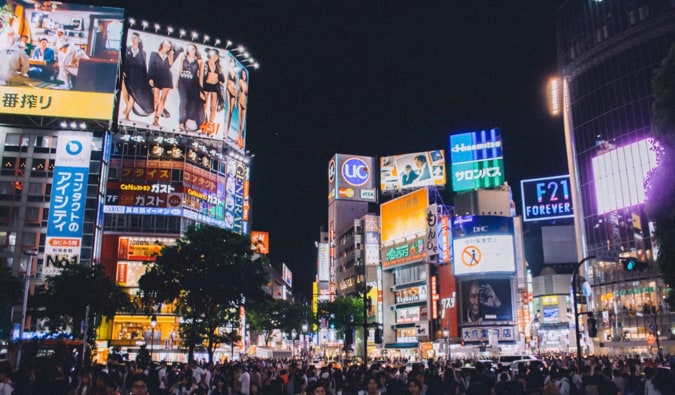
Stroll Around Shimokitazawa
Brimming with vintage shops, this Bohemian neighborhood, often compared to the New York’s East Village showcases the quieter side of Tokyo. Whether you’re looking to shop or just want to take in the scene, it makes for a cool neighborhood to explore.
Stroll through Shinjuku Gyoen National Garden
This park is over 144 acres with some 20,000 trees. Most of the original park was destroyed in World War II during the air raids but was rebuilt and reopened in 1949.
During spring, this beautiful park is one of the best spaces to see cherry blossoms. My favorite part is the Japanese landscape garden, which has several ponds with bridges and islands. It’s a peaceful little oasis within the hustle and bustle of the city.
11 Naitomachi, Shinjuku, +81 3-3350-0151, env.go.jp/garden/shinjukugyoen/index.html. Open Tuesday-Sunday 9am-4pm. Admission is 200 JPY.
Visit Shibuya Crossing
This is quite possibly the busiest and most famous intersection in the world. This area is buzzing at night, with bright lights and frenzied activity, like Times Square on steroids. Make sure to visit the statue between Shibuya Station and the intersection; it’s a tribute to Hachiko, the loyal dog made famous in the film Hachi: A Dog’s Tale.
Eat at the Robot Restaurant
This restaurant is an absolute sensory overload. Lasers, robots, monsters…it has it all! It may be a tourist trap (not cheap), but it is epic, unlike anything you’ve ever seen and worth the price if you want to do something completely out of the ordinary!
1 Chome-7-1 Kabukicho, +81 3-3200-5500, shinjuku-robot.com/pc. There are three performances a day on weekdays starting at 4:45pm, with afternoon matinees on weekends.
Hang with the Harajuku girls
Harajuku is an electric and quirky part of town. You’ll often see teenage “Harajuku girls” walking around town in unique clothing and colorful hairstyles — imagine a 1990s Gwen Stefani video come to life. There’s also a monthly Harajuku Fashion Walk, in which costumed cos-players parade around — for dates, check out the group’s Twitter account (@harajuku_fw).
Experience a Tea Ceremony
No visit to Japan is complete without experiencing a traditional tea ceremony. While these are usually long and expensive experiences, there are definitely some budget-friendly options for anyone looking to experience the ceremony without breaking the bank. Here are a few worth checking out:
- Kyoto-kan (500 JPY per person, Yanmar Tokyo Building 1F 2-1-1)
- Nadeshiko (2,700-4,400 JPY per person, 2-7-24-2F Asakusa)
- The Way of Tea (5,500 JPY per person, Coredo Muromachi 3 3F)
Watch Traditional Japanese Theatre
Kabuki theatre is a traditional form of Japanese performance involving dance and drama. The costumes and makeup are heavily stylized, making for a very visual performance. The Kabukizaka Theatre, located in Ginza, is the best locale to see one of these incredible displays. You can purchase tickets for an entire show or just one act if you’re not ready to commit to a longer performance (they’re in Japanese and last a few hours).
4 Chome-12-15 Ginza, +81 3-3545-6800, kabuki-za.co.jp. Performances are held almost daily. Check the website for the most up-to-date schedule. Expect to pay at least 1,000 JPY for a single-act ticket.
Tokyo Itinerary: Day 4 – Take a Day Trip
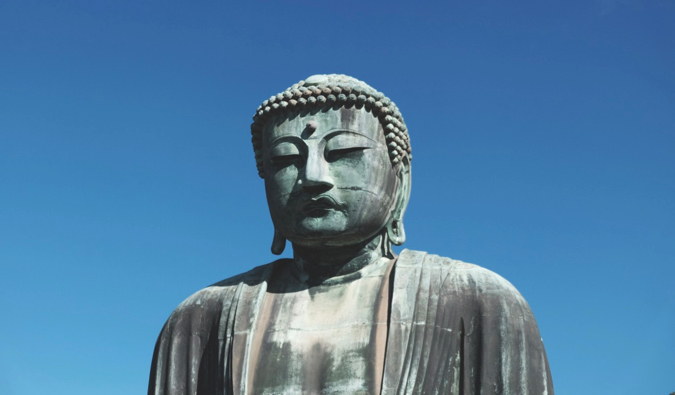
Time to take a break from the city and head out on a day trip. Here are some suggestions:
Visit Daibutsu (the Great Buddha)
Make a day trip to Kamakura, where you can see a 13m bronze statue of Buddha. Built in 1252, the statue was initially constructed within a temple, but the temple was washed away — on several occasions — by storms. The statue now sits in the open air.
4 Chome-2-28 Hase, Kamakura, +81 467-22-0703, kotoku-in.jp. Open daily 8am-5:30pm. Admission is 200 JPY.
Get Touristy at Tokyo Disneyland
I’m a sucker for Disney attractions! This is a fun choice for anyone traveling with children, but also for any adults who just love amusement parks. Opened in 1983, it has seven themed areas to explore and is the third most visited theme park in the world!
1-1 Maihama, Urayasu, +81 45-330-5211, tokyodisneyresort.jp/tdl. Open daily 8am-10pm. Admission is 7,400 JPY for adults and 4,800-6,400 JPY for children, depending on age.
Hike Mount Mitake
Located just over an hour from Tokyo is Chichibu-Tama-Kai National Park. The park covers 1,250 square kilometers of rolling hills, mountains, and forests. There are plenty of hiking trails, though you can also take a cable car to the top and then hike to the shrine that sits on the peak, some 930m above sea level.
Gaze at Mt. Fuji from Hakone
Located just over an hour from Tokyo, Hakone is one of the best places to get away from the city, relax for a few days, and take in the view of Mount Fuji. There are numerous guesthouses in the area, many with their own private onsen (hot springs).
Visit the Ghibli Museum
If you’re a fan of famed director Hayao Miyazaki’s work (Spirited Away, Howl’s Moving Castle, Princess Mononoke), then you’ll want to check out this amazing exhibition. It was designed by Miyazaki himself and is an immersive experience that any film buff will appreciate. There is also a new short film every month, only available to visitors. The museum won’t take up a whole day, but it’s not in a very central location so you’ll need to plan accordingly.
1 Chome-1-83 Shimorenjaku, +81 570-055-777, ghibli-museum.jp. Open Wednesday-Monday 10am-6pm. Admission is 1,900 JPY for adults, with discounts available for youth and children. There are limited tickets available each day so book in advance.
Tokyo Itinerary: Day 5 – Tokyo Tower, Sumo Match, and Samurai
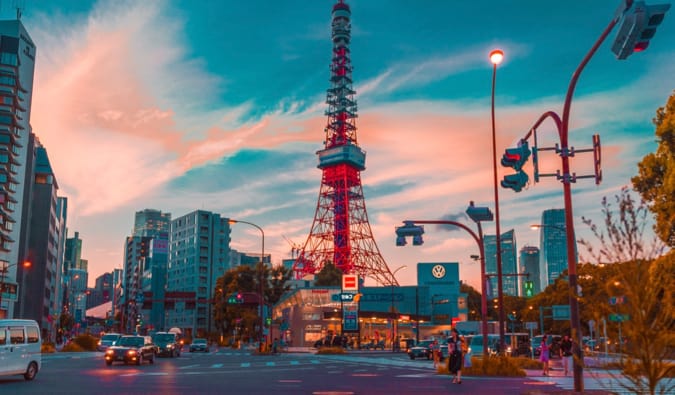
Visit the Tokyo Tower
Built in 1957 and resembling the Eiffel Tower, the Tokyo Tower is taller (at 333m) than its European version and made entirely of steel. You can pay to go all the way to the top floor to take in the view, but frankly, the main observation deck offers one that’s just as good.
4 Chome-2-8 Shibakoen, Minato, +81 3-3433-5111, tokyotower.co.jp. Open daily 9am-11pm. Admission is 900 JPY for the main deck or 1,600 JPY for the top.
Visit the Samurai Museum
No trip to Japan would be complete without learning about samurai. While they were known for their martial skill, there was much more to the culture than just mastering the katana (traditional swords). The museum has some incredible displays of traditional weapons and armor, some of which you can even try on.
Kabukicho 2-25-6, +81 3-6457-6411, samuraimuseum.jp/en. Open daily 10:30am-9pm. Admission is 1,900 JPY per person. You can explore the museum on your own or in a group tour, which are conducted every 30 minutes.
Walk across the Rainbow Bridge
This is the city’s most popular bridge and offers some lovely views of both sides of Tokyo Bay. Built in 1993, the bright lights up at night with rainbow colors — hence the name. It makes for a pleasant walk during the day or at night.
Watch a Sumo Match
Kokugikan, Japan’s most famous sumo wrestling arena, hosts tournaments three times each year. The sumo wrestling that we see today dates back to the 17th century, though its origins date back even further, and it’s still one of the most popular traditions in the country. If you’re in town at the right time, this is a must-do! Tickets sell out quickly so act quick. A visit to one of the sumo stables nearby can be interesting but must be arranged well in advance.
1 Chome-3-2-8 Yokoami, Sumida, +81 3-3623-5111, sumo.or.jp/kokugikan. Ticket prices vary, but expect to pay around 2,200 JPY.
Drinks at the Park Hyatt
New York Bar is the iconic bar from Sofia Coppola’s 2003 film Lost in Translation. Located on the 52nd floor, it actually lives up to the hype of the film. The atmosphere is classy, the drinks are great, and the view is absolutely stunning. There is live jazz every night, and while there is a cover charge (around 2,500 JPY), it’s definitely worth it!
3-7-1-2 Nishishinjuku, +81 3-5322-1234, hyatt.com. Open Sunday-Wednesday 5pm-12am and Thursday-Saturday 5pm-1am.
Where to Eat
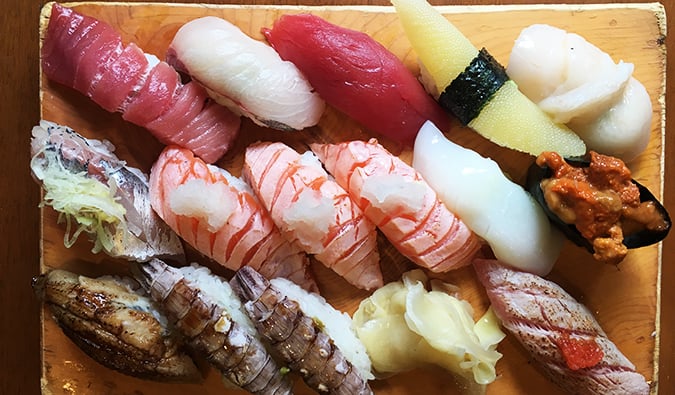
Tokyo is so huge and has so many dining options, that it would be impossible to pick just two or three favorites. Here are just a few of my favorite restaurants in Tokyo:
- Bifteck Kawamura Ginza – The steak here basically melted in my mouth and exploded with flavor. I found it a bit too high-end and overpriced for me though. 6 Chome-5-1 Ginza, Ginza MST Bldg. 8F, Chuo, 104-0061, +81 3-6252-5011, bifteck.co.jp.
- Ichiran Shibuya – This ramen spot served one of the best meals I had my entire trip. The thick, flavorful broth is to die for. I also like how you eat in your own little private booth. Funky. Expect a wait during peak lunch and dinner times. 1 Chome-22-7 Jinnan, Shibuya, 150-0041, +81 3-3463-3667, en.ichiran.com/index.php.
- Isakaya Juban – A little hole-in-the-wall izakaya restaurant (think Japanese tapas) with locals getting drunk on sake and eating tasty small plates. I was big fan of its salmon and grilled squid. 2 Chome-1-2 Azabujuban, Minato, 106-0045, +81 3-3451-6873, izakayajuban.com.
- Kakimaru – An amazing seafood and tapas place. Be sure to get the oysters. Note: While Google Maps will list the restaurant as Kakimaru, when you go there, the restaurant will be called Uohama. 6 Chome-1-6 Roppongi, Minato, 106-0032, +81-3-5413-3689.
- Standing Sushi Bar – This standing sushi location is one of many in town. It’s great for a quick bite: you stand, eat sushi, and get out. It has a robust menu and it’s cheap! 1 Chome-12-12 Nishishinjuku, Kasai Bldg. 1F, Shinjuku, 160-0023, +81 3-3349-1739, uogashi-nihonichi.com.
- Tenmatsu Tempura – The tempura here is well known for its lightness. It’s a small establishment with set tempura menus. 1 Chome-8-2 Nihonbashimuromachi, Chuo, 103-0022, +81 3-3241-5840, tenmatsu.com/english.html.
For more places to eat, check out this post on the best places to eat in Tokyo.
Extra Resources
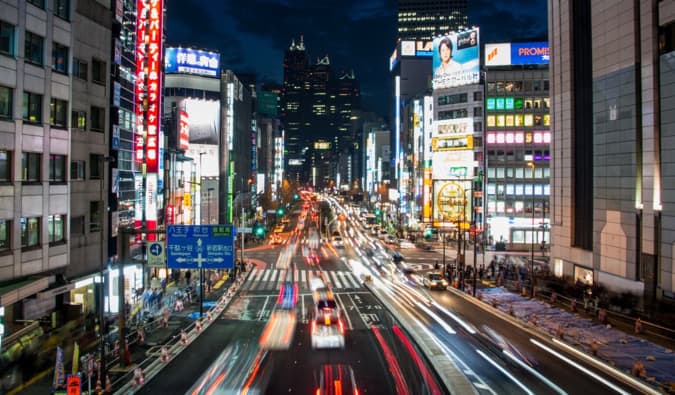
To see what other fun and interesting activities are going on in the city during your visit, here are a few magazines and websites you’ll want to check out:
Tokyo is a massive city. You could spend a lifetime here and still not discover everything there is to see. But if you follow the itinerary and suggestions above, you’ll be able to have a fun and insightful visit and leave this sprawling capital with a nuanced perspective of what life in Tokyo is like. Best of all, you’ll be able to do it without breaking the bank!
Book Your Trip to Japan: Logistical Tips and Tricks
Book Your Flight
Find a cheap flight by using Skyscanner or Momondo. They are my two favorite search engines because they search websites and airlines around the globe so you always know no stone is left unturned.
Book Your Accommodation
You can book your hostel with Hostelworld as they have the most comprehensive inventory so they are best for booking a hostel. If you want to stay in a hotel or guesthouse in Japan, use Booking.com as they consistently return the cheapest rates for guesthouses and cheap hotels. They’re the best booking site out there. My favorite places to stay in Japan are:
- Khaosan Tokyo Kabuki (Tokyo) – This is one of the best hostels in the country. The staff go above and beyond, each room has its own bathroom, and it’s in a great location to help you explore the city.
- Sheena and Ippei – This hostel is super homey, and the owners are both helpful and knowledgable. The lounge is open to everyone, and you can enjoy appetizers and sake on the weekends.
- Hostel Chapter Two Tokyo – This is a small, family-run hostel in Asakusa. There’s a great view of the river and the dorms seem new and immaculately clean.
Don’t Forget Travel Insurance
Travel insurance will protect you against illness, injury, theft, and cancellations. It’s comprehensive protection in case anything goes wrong. I never go on a trip without it as I’ve had to use it many times in the past. I’ve been using World Nomads for ten years. My favorite companies that offer the best service and value are:
- World Nomads (for everyone below 70)
- Insure My Trip (for those over 70)
Looking for the best companies to save money with?
Check out my resource page for the best companies to use when you travel! I list all the ones I use to save money when I travel – and I think will help you too!
Looking for more travel tips for Japan
Check out my in-depth Japan travel guide for more ways to save money, costs, tips on what to see and do, suggested itineraries, reading, packing lists, and much, much more!
The post How to Spend Your Time in Tokyo: A Suggested Itinerary for 2019 appeared first on Nomadic Matt's Travel Site.
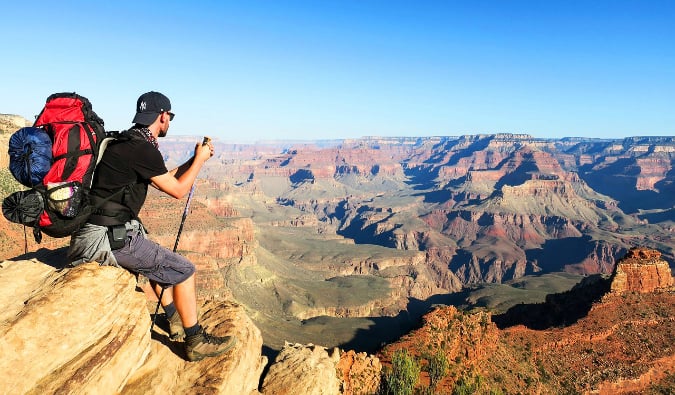 Updated: 4/8/2019 | Originally Posted: 07/29/2009
Updated: 4/8/2019 | Originally Posted: 07/29/2009 